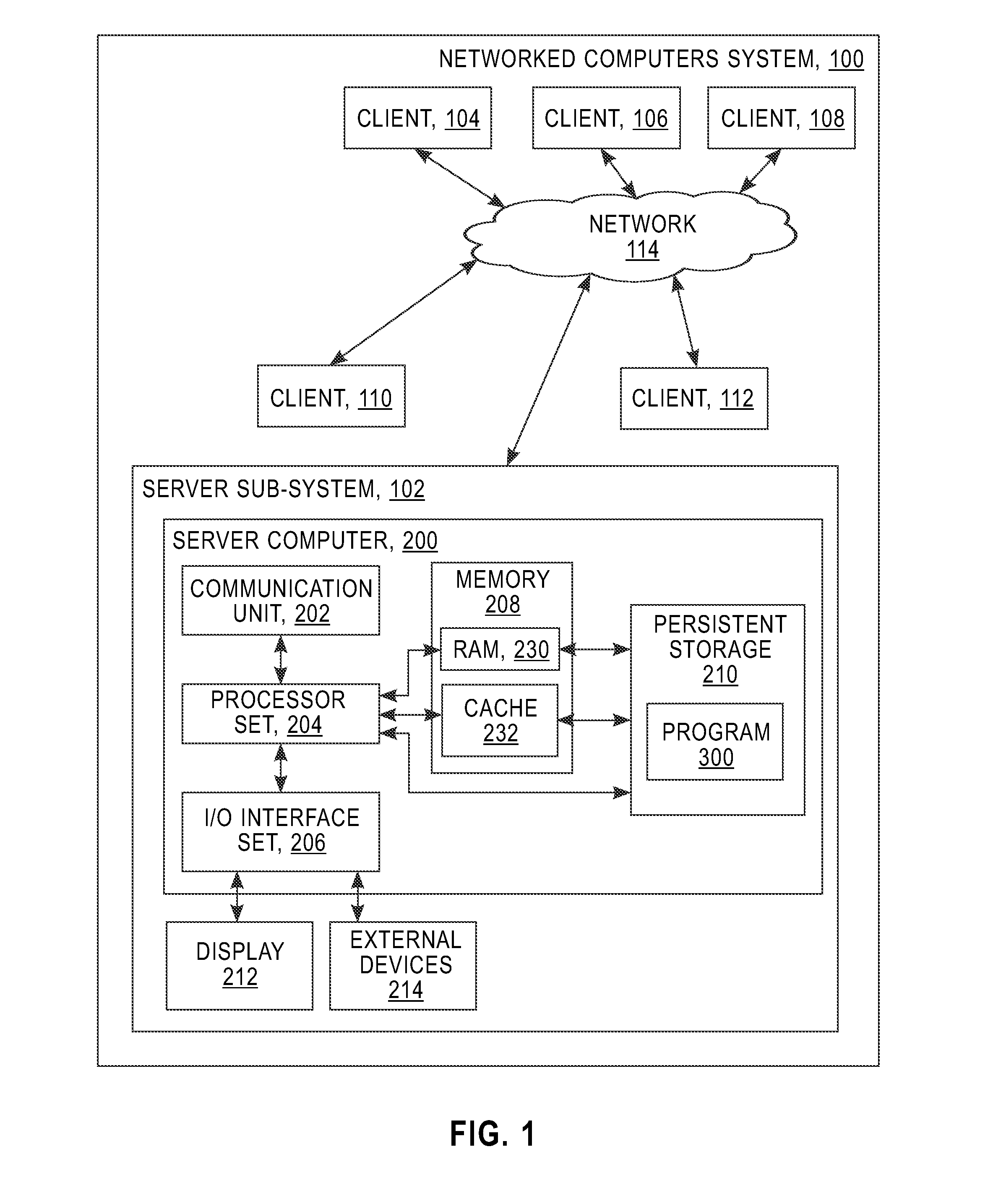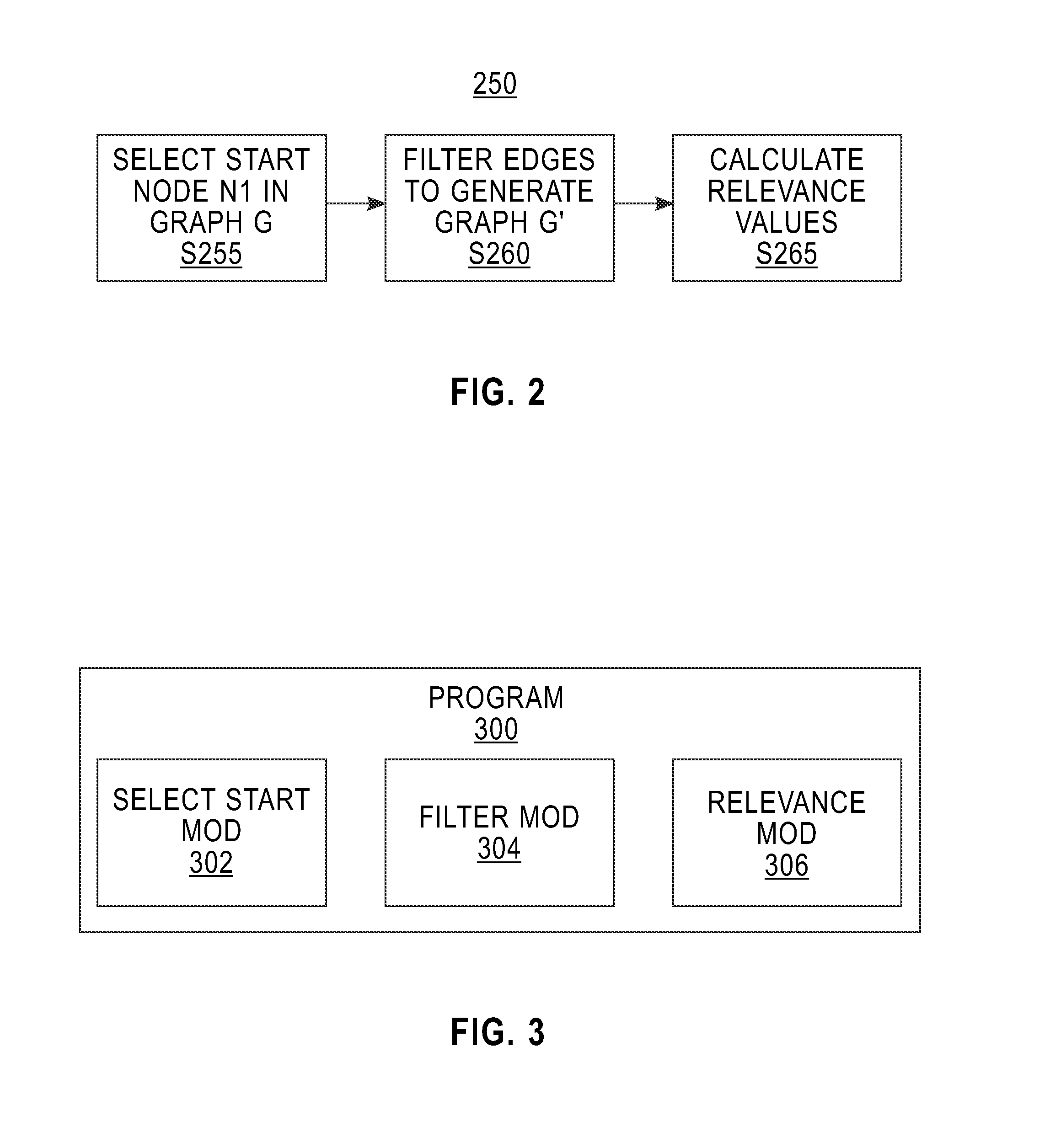Node relevance scoring in linked data graphs
a technology of linked data and relevance scoring, applied in the field of linked data graphs, can solve the problems of high price and creating a challenge of the richness of information available through integration
- Summary
- Abstract
- Description
- Claims
- Application Information
AI Technical Summary
Benefits of technology
Problems solved by technology
Method used
Image
Examples
example embodiment
II. EXAMPLE EMBODIMENT
[0036]FIG. 2 shows flowchart 250 depicting a method according to the present invention. FIG. 3 shows program 300 for performing at least some of the method steps of flowchart 250. This method and associated software will now be discussed, over the course of the following paragraphs, with extensive reference to FIG. 2 (for the method step blocks) and FIG. 3 (for the software blocks).
[0037]Processing begins at step S255, where select start module (“mod”) 302 receives the data corresponding to linked data graph G (see FIG. 4A), and selects a “start node,” which, in this example is node N1 (see FIG. 4A). All of the other nodes of graph G (in this example, nodes P1, P2, P3, P4, P5, P6, P7 and P8 and sometimes referred to as “relevance nodes” or “target nodes”) will be evaluated for relevance to the start node by this method of flow chart 250. As shown in FIG. 4A, in graph G, the various nodes are linked by edges E1, E2, E3, E4, E5, E6, E7, E8, E9, E10, E11, E12, E13...
PUM
 Login to View More
Login to View More Abstract
Description
Claims
Application Information
 Login to View More
Login to View More - R&D
- Intellectual Property
- Life Sciences
- Materials
- Tech Scout
- Unparalleled Data Quality
- Higher Quality Content
- 60% Fewer Hallucinations
Browse by: Latest US Patents, China's latest patents, Technical Efficacy Thesaurus, Application Domain, Technology Topic, Popular Technical Reports.
© 2025 PatSnap. All rights reserved.Legal|Privacy policy|Modern Slavery Act Transparency Statement|Sitemap|About US| Contact US: help@patsnap.com



